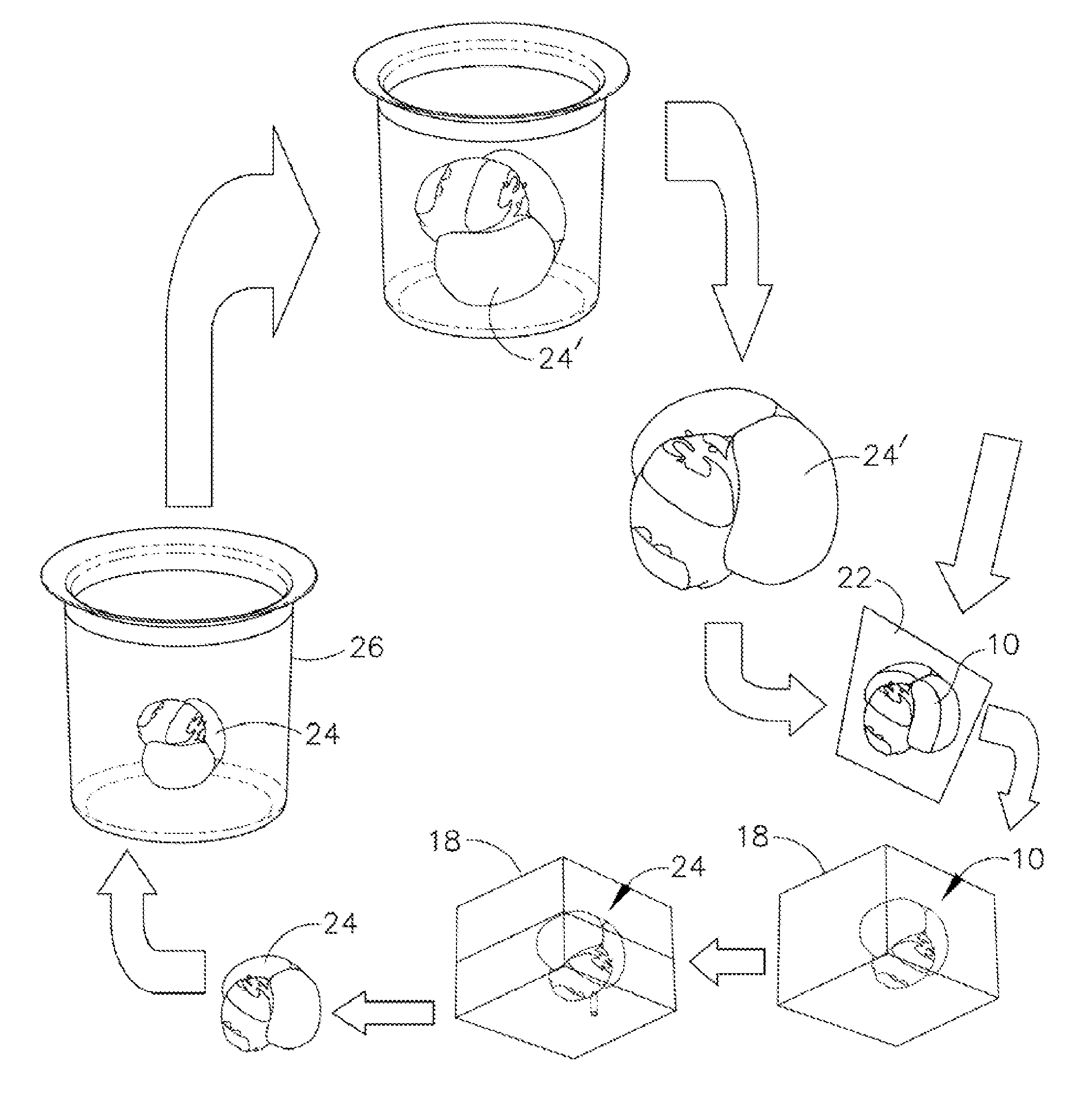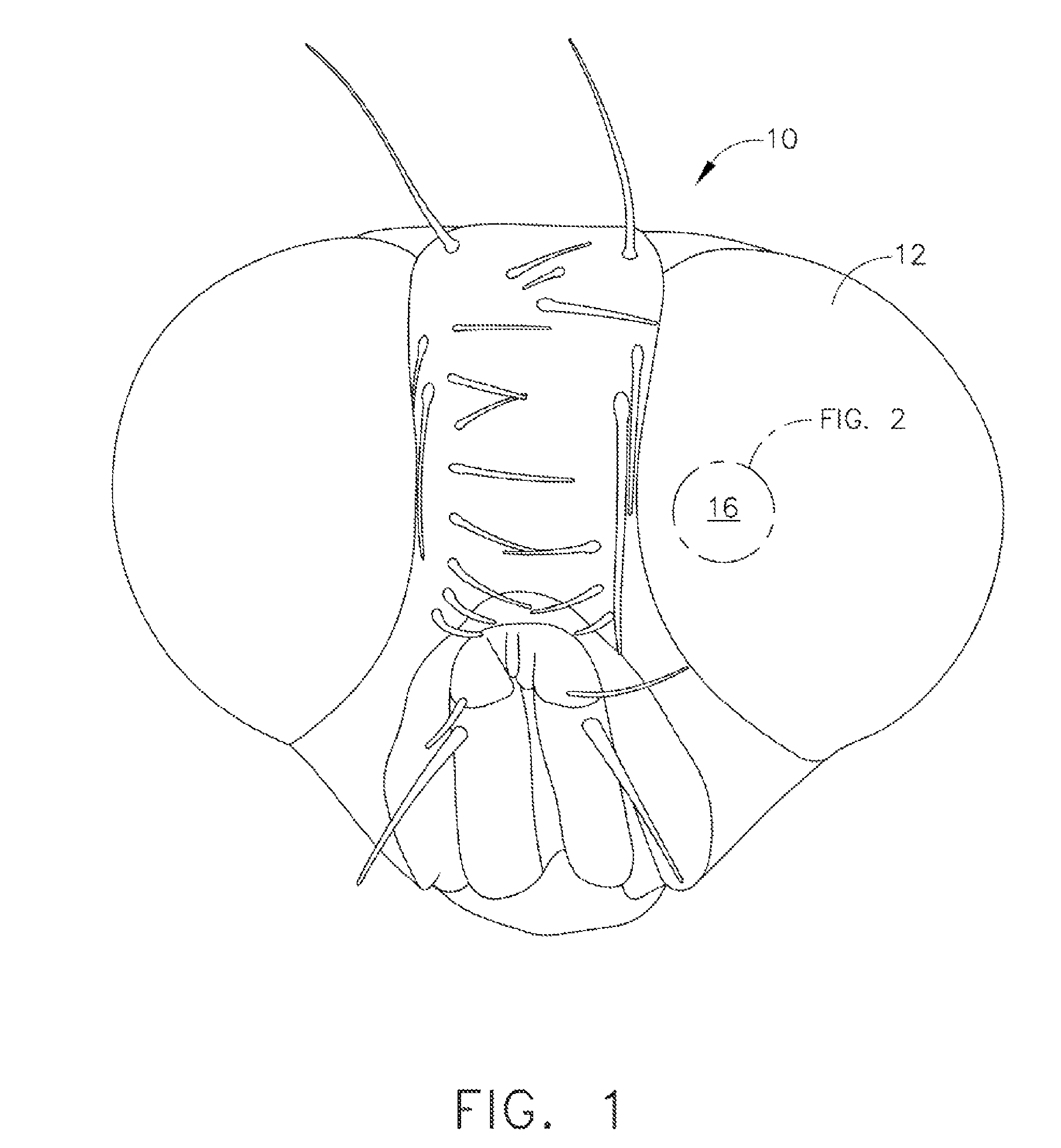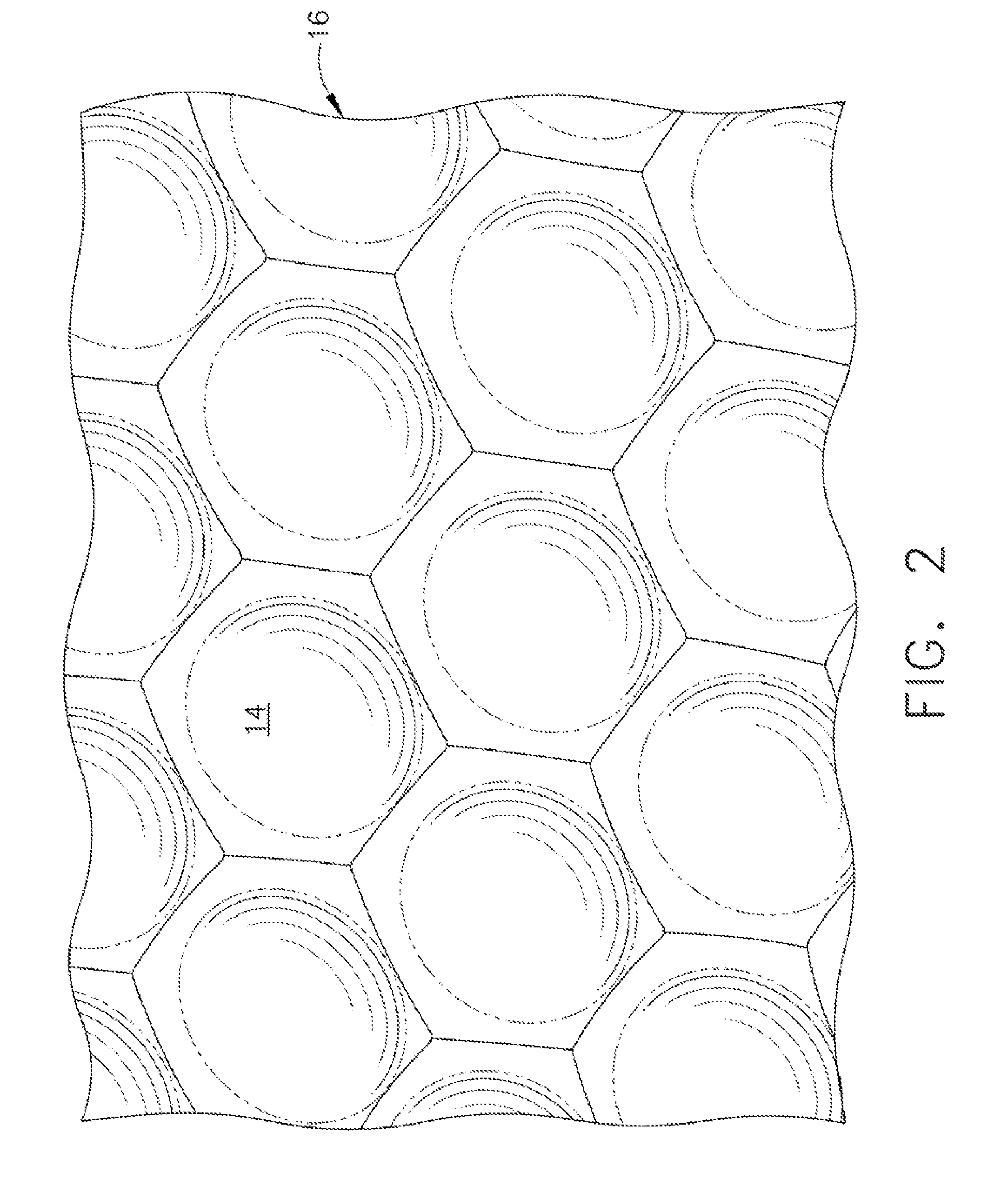Method and apparatus for scaled up reproduction of detailed features
a microscopic surface and scale technology, applied in the field of scaled enlargement of microscopic surface features, can solve the problems of inability to complete fully automated tasks in unstructured environments, no general purpose robot can navigate through obstructed or cluttered environments, pickup and manipulate objects, and assemble components, etc., to achieve precision of a similar nature in an unstructured or unregistered environment with unregistered objects
- Summary
- Abstract
- Description
- Claims
- Application Information
AI Technical Summary
Benefits of technology
Problems solved by technology
Method used
Image
Examples
Embodiment Construction
[0024]A method and apparatus are disclosed herein to create highly detailed scale up of microscopic surface features of an article. The specific embodiment provided in detail creates compound eyes which retain characteristics evolved in insect eyes but are large enough to simplify interfacing to conformal detector arrays. An insect head, which is approximately 3000 microns in diameter, is too small to interface to and to integrate into larger systems. As an example without limitation, the compound eye of a fly has thousands of simple eyes called ommitidia. These are on the order of 40 microns in diameter. The fine structures on the ommitidia are features approximately 250 nanometers in diameter and 30 nanometers high.
[0025]The process takes a representation (a cast), for instance without limitation, of a compound eye (or other small scale item) and scales it to successively larger sizes. An accurate mold of the compound or insect eye is made. A cast of the eye is made using a materi...
PUM
| Property | Measurement | Unit |
|---|---|---|
| diameter | aaaaa | aaaaa |
| diameter | aaaaa | aaaaa |
| diameter | aaaaa | aaaaa |
Abstract
Description
Claims
Application Information
 Login to View More
Login to View More - R&D
- Intellectual Property
- Life Sciences
- Materials
- Tech Scout
- Unparalleled Data Quality
- Higher Quality Content
- 60% Fewer Hallucinations
Browse by: Latest US Patents, China's latest patents, Technical Efficacy Thesaurus, Application Domain, Technology Topic, Popular Technical Reports.
© 2025 PatSnap. All rights reserved.Legal|Privacy policy|Modern Slavery Act Transparency Statement|Sitemap|About US| Contact US: help@patsnap.com



